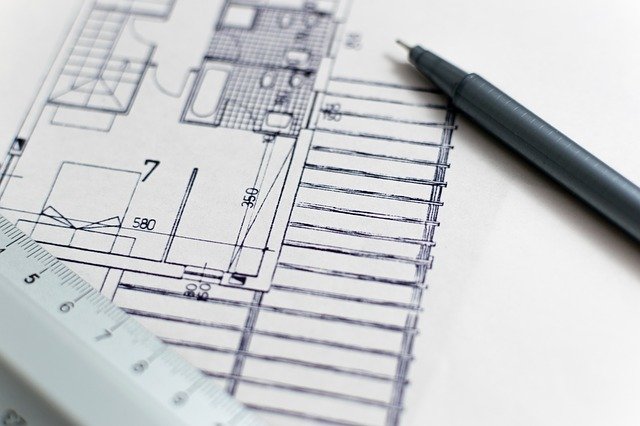Depending on your needs, you might be debating outdoor vs. indoor walk-ins. Use this guide to learn about the pros and cons of each to help you make the most informed decision for your business.
Where Does the Walk-in Fit?
One of the most prominent factors when considering outdoor vs. indoor walk-ins is the space you have available to you. Indoor walk-ins require more space than their mere dimensions. It’s necessary to provide a buffer zone around the cooler or freezer to ensure proper airflow. Most designs recommend a minimum of two inches from each surrounding wall and ceiling clearances will vary depending on the refrigeration system. Additionally, you want easy access to the cooling unit so cleaning and maintenance will be a breeze. At Arctic, we build every walk-in to the project’s specifications, so we can create a design to fit your space!
Outdoor Options
Sometimes you might need a cooler or freezer bigger than what your indoor space allows. In that case, an outdoor walk-in would be just the ticket to provide you with plenty of chilled storage and leave you all the inside space you need to run your business!
There are two options for outdoor cooler placement. You can choose to either build a free-standing walk-in or build it into your structure. Built-in would mean the door of the walk-in would be butted up to your building. The walk-in has access from the inside of your business.. While the second option does require more cost and work on the front end, It is a convenient option for minimizing personnel traffic to the outside while offering an extra layer of security to the contents of the walk-in as it can be made accessible only from the inside of your business if desired.
Do You Mind Equipment Noise?
Another consideration in choosing an indoor or outdoor walk-in is the noise. If you have a small space that relies on a calming ambiance, you might not want to have the noise of the refrigeration unit in the background. On the other hand, if you have a bustling business or don’t mind white noise in the background, keeping the walk-in indoors shouldn’t be a problem. An indoor walk-in with a remote system is also a good way to eliminate refrigeration equipment noise indoors.
Outdoor vs. Indoor Walk-ins: Climate
Depending on your regional climate, the weather can impact whether you want an indoor or outdoor walk-in. It’s valuable to consider this variable when deciding the best place for your walk-in.
Outdoor Walk-Ins Benefit from Cool Climates
In some cases, the climate can be a money saver. For example, if you live somewhere with longer stretches of cooler weather, an indoor walk-in with a remote system is also a good way to eliminate refrigeration equipment noise indoors. Additionally, your refrigeration unit won’t have to work as hard, saving you on energy bills and adding to the longevity of your refrigeration system.
Long Hot Summers? Keep the Walk-In Inside
However, more hot and humid climates cause an outdoor walk-in to work overtime. If you live somewhere that rarely cools off, outdoor systems will run up your energy bill by working overtime to keep your product cold. An indoor cooler will benefit from the more regulated temperatures inside a building.
Severe Weather Risk
A third climate factor to consider is severe weather. High winds, hail, snow and water can damage your walk-in. Additionally, if you live in an area that gets hefty snowfall, you may need to invest in a load bearing ceiling roof for your walk-in.
Most risks associated with severe weather events can be mitigated with a bit more planning and preparation. For example, a sunshade over the walk-in will provide relief from warmer weather. In the case of snow and rain hail and other debris, a sturdy rubber roof membrane can protect the walk-in.
Outdoor Walk-in Accessories
Outdoor walk-ins require a spa treatment to get them ready for life outside! Common panel finishes like Galvalume and Stainless Steel offer great protection against weather elements. The panels all need to be finished with a protective weather-resistant coating. There are also a few accessories you will want to add to keep it fortified to the elements. In areas with cold winters, outdoor rated condensing units have extra components to allow them to operate properly under those conditions. Some condensing units may have sloped rain covers to divert heavy rain form the equipment. A condensing unit cover will protect the more vulnerable machinery from precipitation and erosion. As mentioned before, a rubber roof membrane will protect the walk-in from rain and snow debris from eroding the walls or getting stuck in the seams. Rain gutters over the door are used to keep water away from the door frame opening. mount a rain gutter over the door to keep water from damaging the door panel.
Lastly, Arctic walk-in doors come with a lock and key, ideal for outdoor coolers.
Potential Extra Upfront Costs
Because an outdoor walk-in requires a few extra parts and preparations, they are often a pricier option. But the space and potential benefits (and potential energy) they save could outweigh the upfront costs.
Make the Best Choice for You!
Be sure you consider all the variables before choosing which style of walk-in works best for your business. The folks at Arctic would be happy to help talk through your options when debating outdoor vs. indoor walk-ins. With their help, you can decide what design and build best meet your needs.

